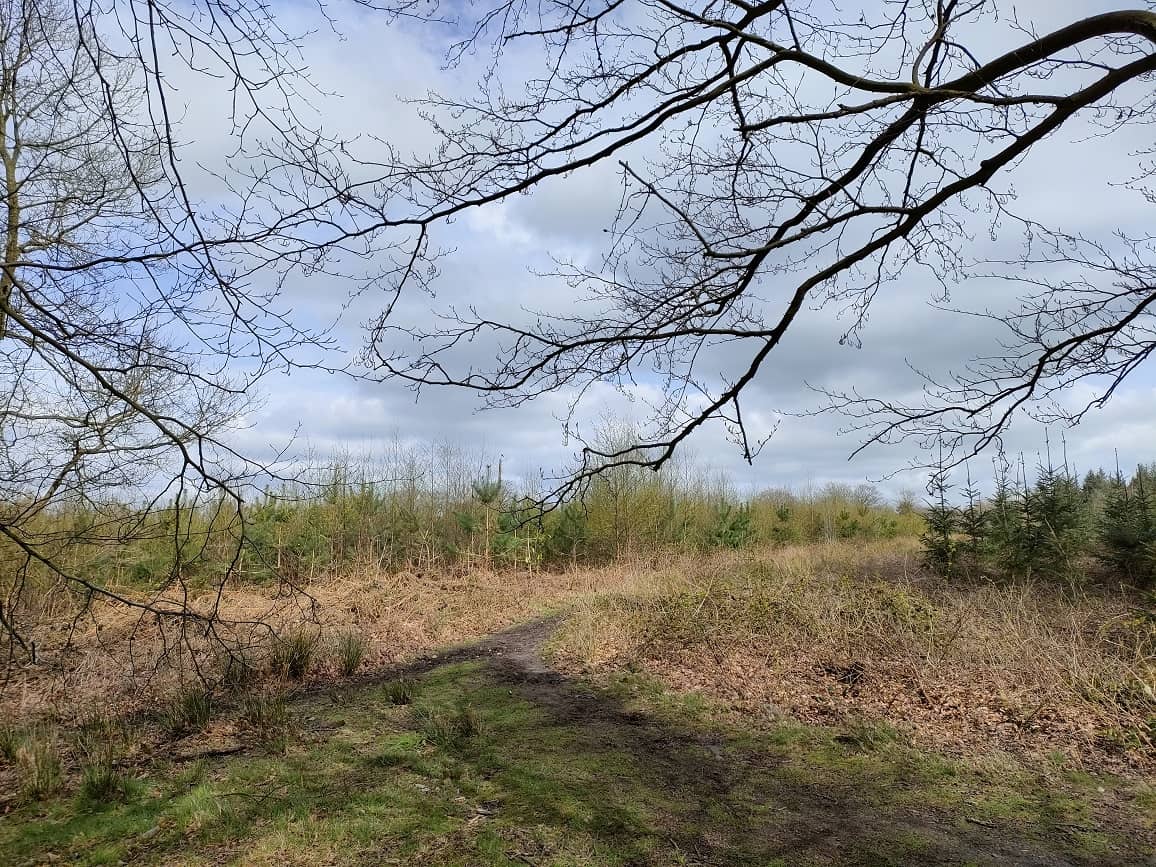Steve Docker is a Resource Development Officer with Field Studies Council Publications. Here he spends some time at a plantation and heathland site in Derbyshire and finds some unexpected treasures.
It was a warm April day and my wife and I decided to make a daytime visit to Wayne Piece in Derbyshire, in preparation for some evening visits in May and June, to check for European Nightjar, Woodcock and Cuckoo. Wayne Piece is plantation and heathland, surrounded by farmland and it reminded me of the site that I used for my European nightjar bioacoustics research conducted a few years ago, in neighbouring Nottinghamshire.
We like to use the ‘walk and pause’ technique. Navigating a roughly circular route around a site, we include as many different habitats as possible. We make frequent stops to take in the views, undertake some quiet contemplation and to give the wildlife a chance to ‘come to us’. It can be very productive and rewarding.
Upon arrival, and before we had even got out of the car, we were greeted by a very smart looking Pied Wagtail, perched on a wooden fence in front of us.
We set off along the path heading towards Wayne Piece. As we approached, I could hear bird song ahead of us. One of the songs comprised two piercing phrases, sounding like ‘chiff’ and ‘chaff’ repeated in different combinations. Another song was more subtle with a descending cascade-like verse. These originate from two very similar looking warblers, first separated by their songs by the naturalist Gilbert White in 1789. The first song is that of the Chiffchaff, its song sounds like its name (onomatopoeic). The second song is that of the Willow Warbler, which sounds a little like its batteries are running low. This outside classroom provided the perfect opportunity to compare the two species.
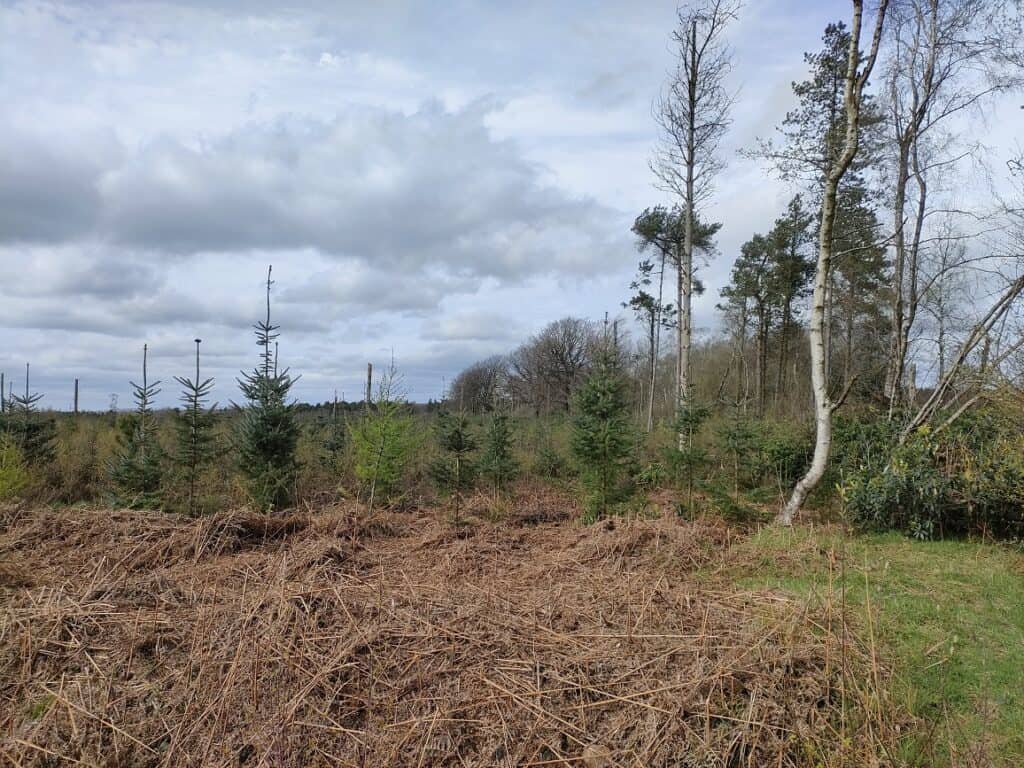
Time for Lunch
After an hour or so exploring the adjacent plantation, we emerged from the trees and the sun was out – time for our picnic lunch. We selected an undisturbed embankment with a shallow hollow at the top. As we advanced towards this little sun trap via its south facing ridge there was a sudden ‘darting’ movement at our feet. After a few seconds we were able to focus on the agile culprit and we were delighted to see a Common Lizard. It moved a short distance but seemed reluctant to retreat under the short vegetation. It moved again and then paused in an open, exposed area and this gave me a chance to capture some photographs on my mobile phone. I could make out three lines of dark broken markings running the length of its brown body, one central (vertebral) and one either side (lateral). Starting from a distance and slowly, gradually, working my way closer I managed to get a series of photographs before the animal decided to seek cover.
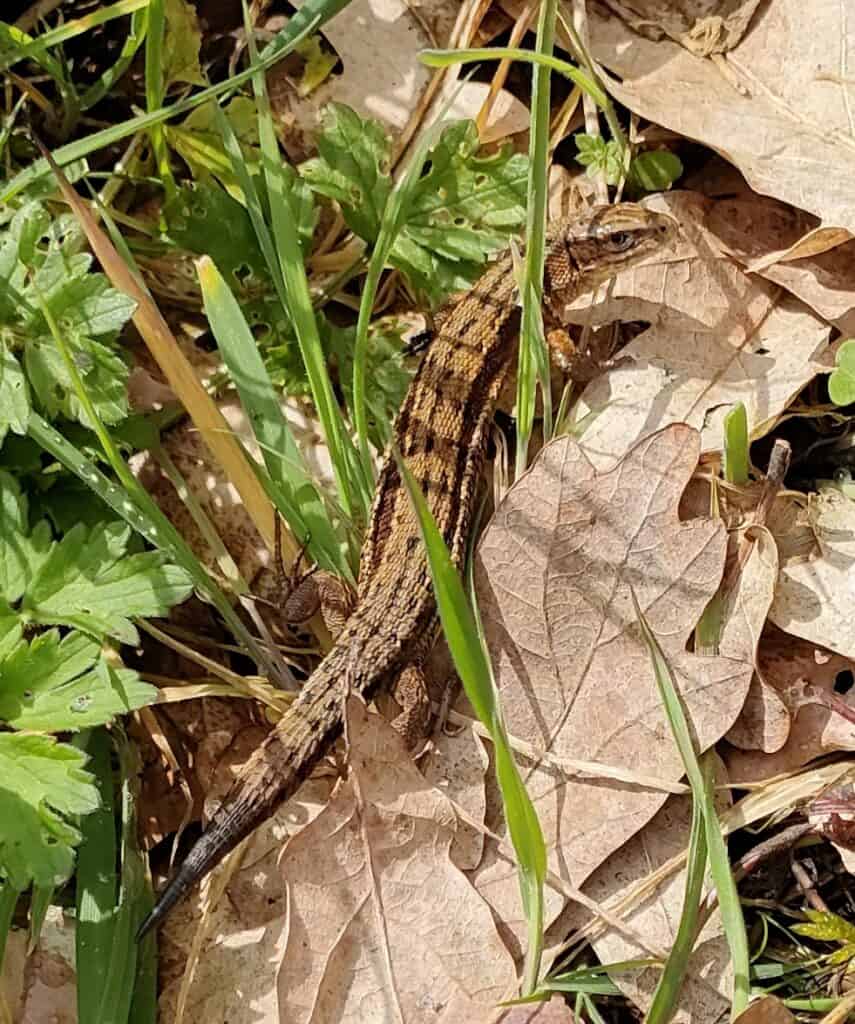
A Common Carder Bee Bombus pascuorum was investigating the ground vegetation as I removed the lid of my sandwich box. Then, as I was about to pick up a sandwich a beetle flew over my right shoulder and landed on a nearby leaf in front of me. Beetles have rigid front wings (elytra) which form a protective cover for the hind flight wings. Usually, these hardened wing cases make them a little clumsy in flight and with practice, their distinctive mode of flight may be readily detected. Keeping the beetle in sight, I fumbled in my ‘naturalist’s’ bag for a collecting tube. Then, on hands and knees and with a swift and careful movement, the beetle was in the pot ready for a closer examination. My hand hovered over my sandwich but before I could pick it up something small, on a patch of bare ground, glinted in the sunlight. Again, eyes trained on the prize and with a little light ‘grubbing’, I managed to safely extricate it from the undergrowth and get it into a second pot. Lunch was not turning out to be quite as relaxing as I had expected!
After a somewhat delayed lunch, I examined the beetles using a recently acquired piece of field equipment called ‘Beehave’. This ‘spypot’ device, designed by Richard Dawson, provides a harmless way to immobilise invertebrates in a specimen tube to enable field identification using a hand lens. About 6mm long and a brown ochre colour, the first specimen was a Heather Beetle Lochmaea suturalis. There was certainly plenty of nearby heather.
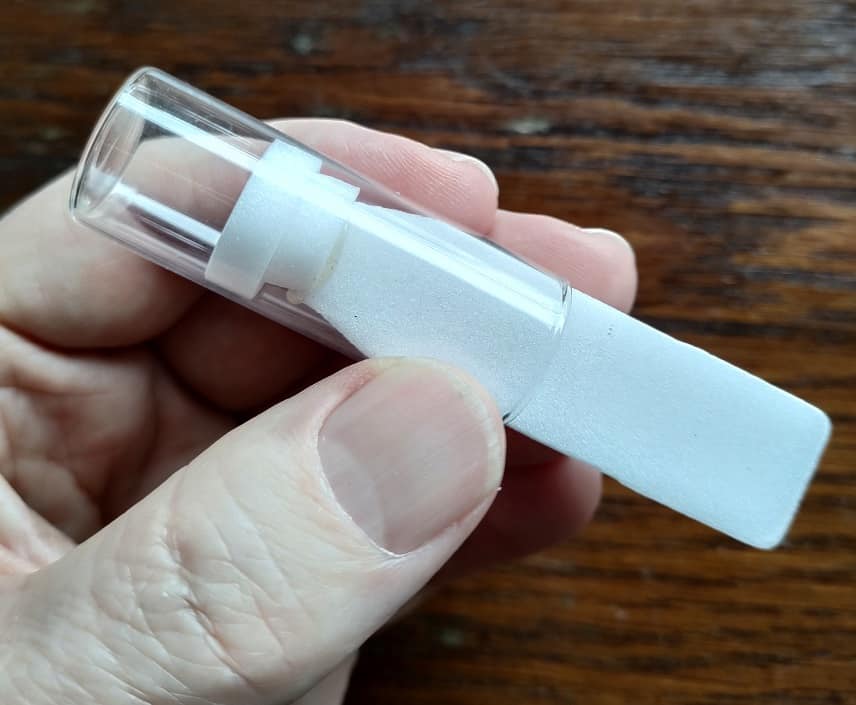
The second specimen was a small ground beetle (Carabidae), about 5mm long with a shiny upper surface. It had a distinctive appearance, especially the series of longitudinal ridges between its outsized eyes – it was a Springtail-stalker Notiophilus sp. Although distinctive as a group, the 8 species can be somewhat tricky to separate!
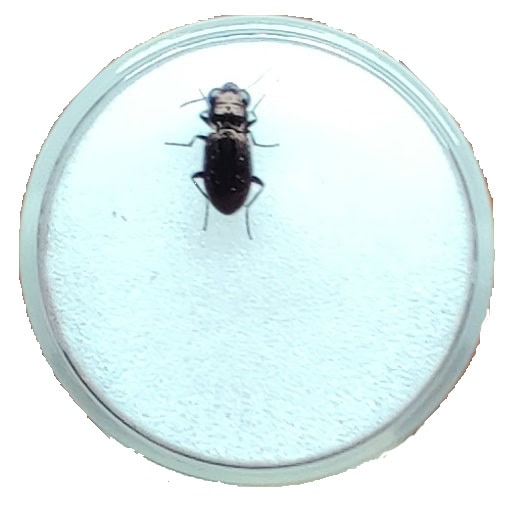
Ancient woodland indicator
We completed our tour of the site and as we approached our starting point, we noticed a patch of Yellow Archangel Lamiastrum galeobdolon. The species is a member of the Dead-nettle (Lamiaceae) family and it is considered to be an indicator of ancient woodland. Interesting that we had not noticed them when we passed by the very same spot earlier in the day – probably because we had been concentrating on warbler songs at the time! We noticed that many of the leaves had conspicuous pale blotches on them. Later, when consulting our flora there are apparently three sub-species, one of which ssp. argentatum has this character. Always learning new things!
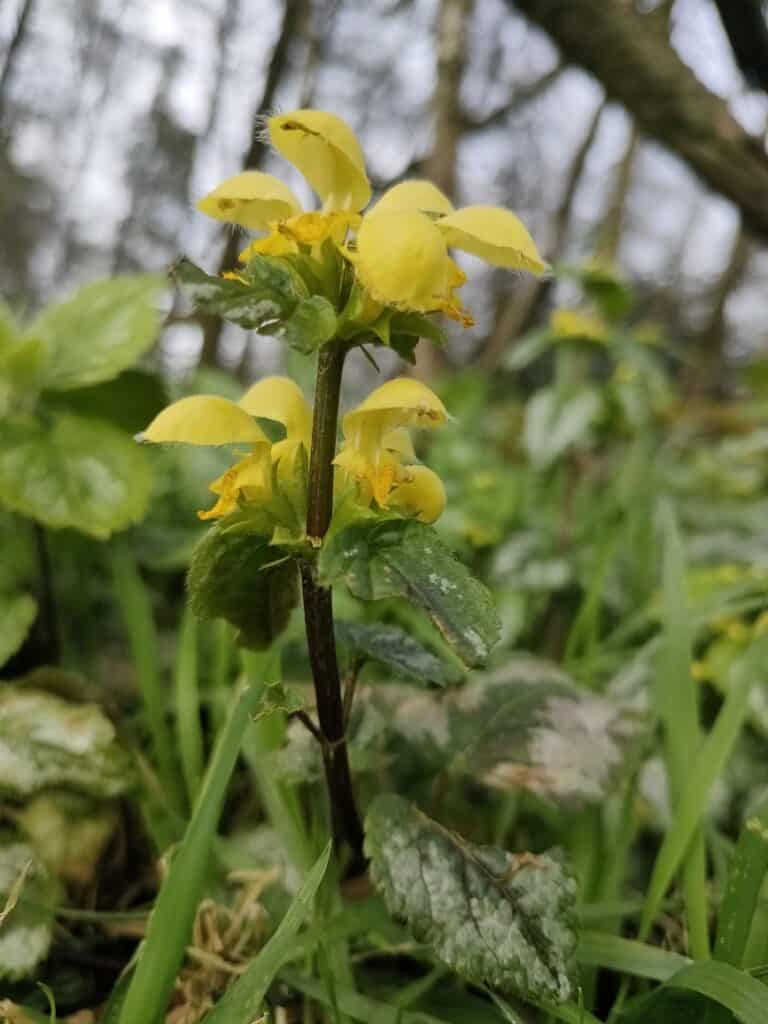
As we returned home after our ‘champagne day’, I glanced down at my lunchbox only to discover that in all the commotion at lunch time I had forgotten to eat my crisps!
Want to learn more?
Check out the wide range of Field Studies Council courses.
To help us all appreciate and enjoy biodiversity and better understand the changing state of nature the Field Studies Council has produced a wide range of high quality identification resources. In particular the WildID fold-out guides and Aids to Identification in Difficult Groups of Animals & Plants (AIDGAP). The guides are available from the Field Studies Council online shop.

